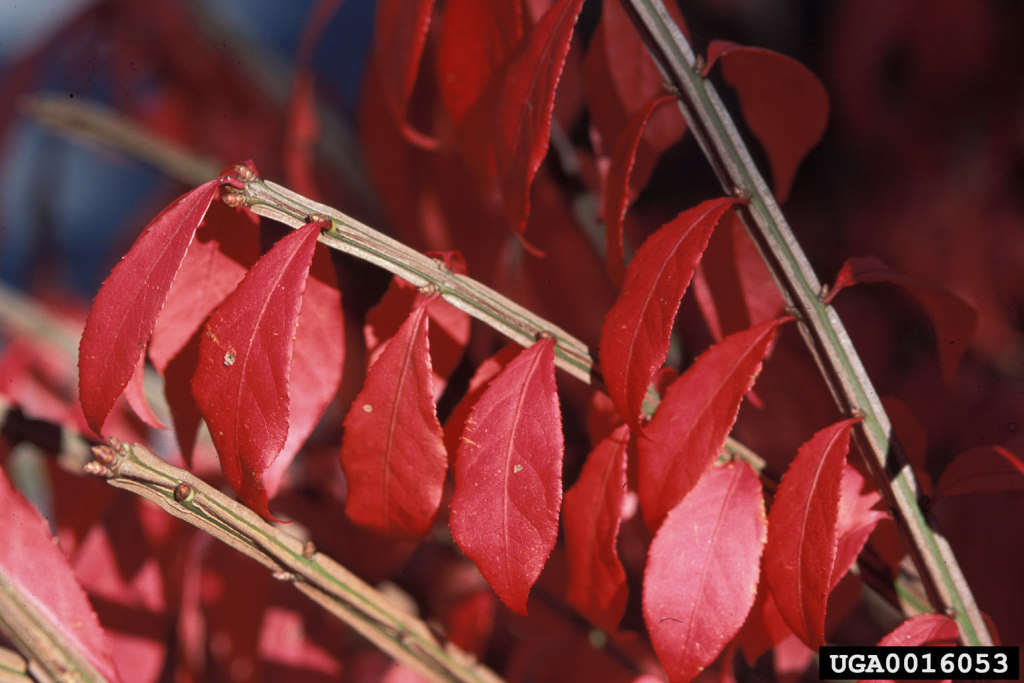
28 February 2023
Last month the Pennsylvania Department of Agriculture added two more landscape plants to the list of Pennsylvania Noxious Weeds: Winged burning bush (Euonymus alatus) and privet hedge (Ligustrum spp.). They jumped the queue into Class B Noxious Weeds because they are widely established in the wild with no hope of getting rid of them.
Winged burning bush (Euonymus alatus):
Native to China, Japan and Korea winged burning bush is a very popular landscaping plant that is so good at growing in dense shade that it invaded Pennsylvania’s woods. You’ve seen it in your neighborhood in October when the leaves turn bright red or magenta.
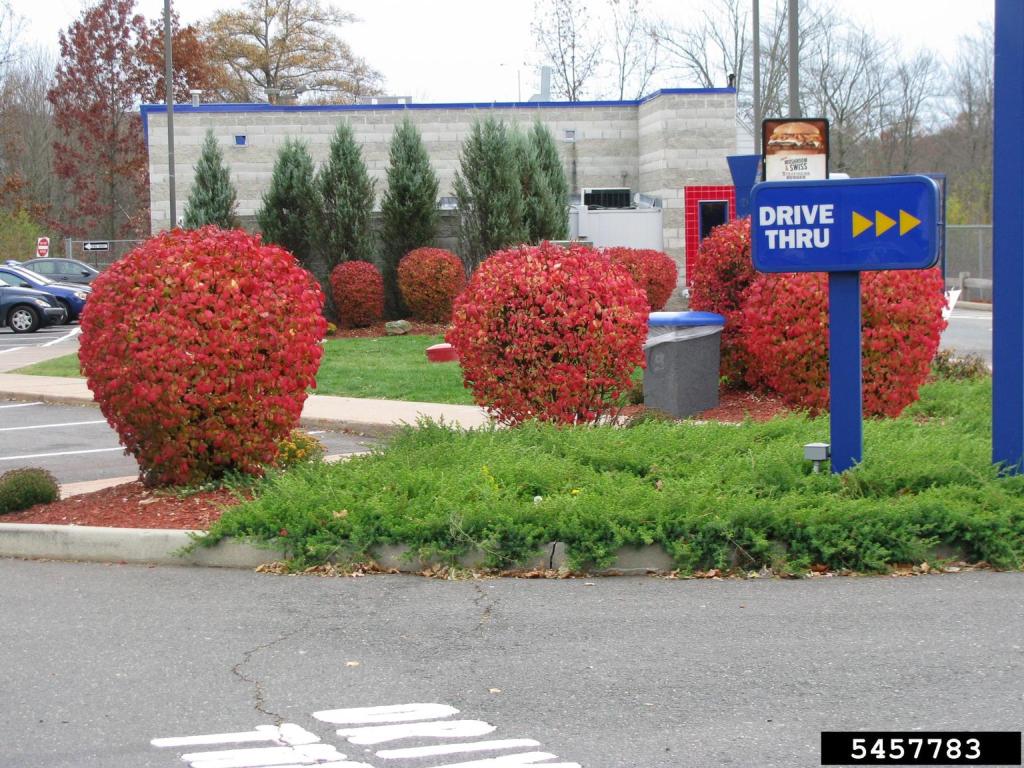
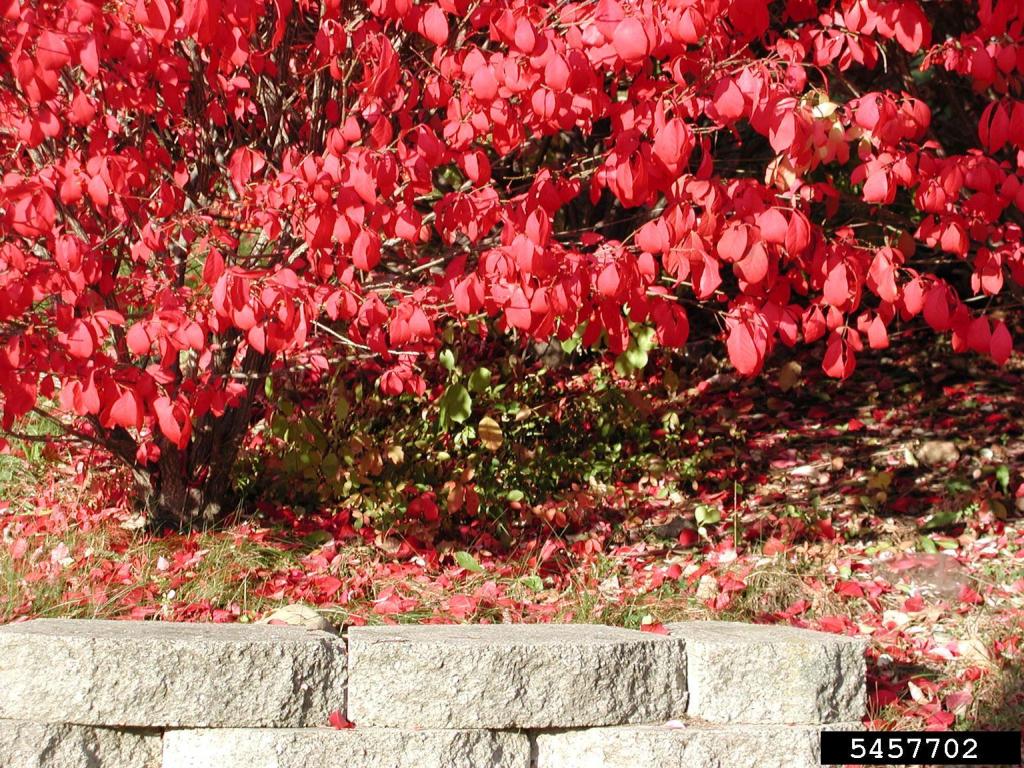
Right now it is leafless but you can recognize it by the flanges or “wings” on the stems. Here’s what it looks like in summer with opposite leaves on the stem.
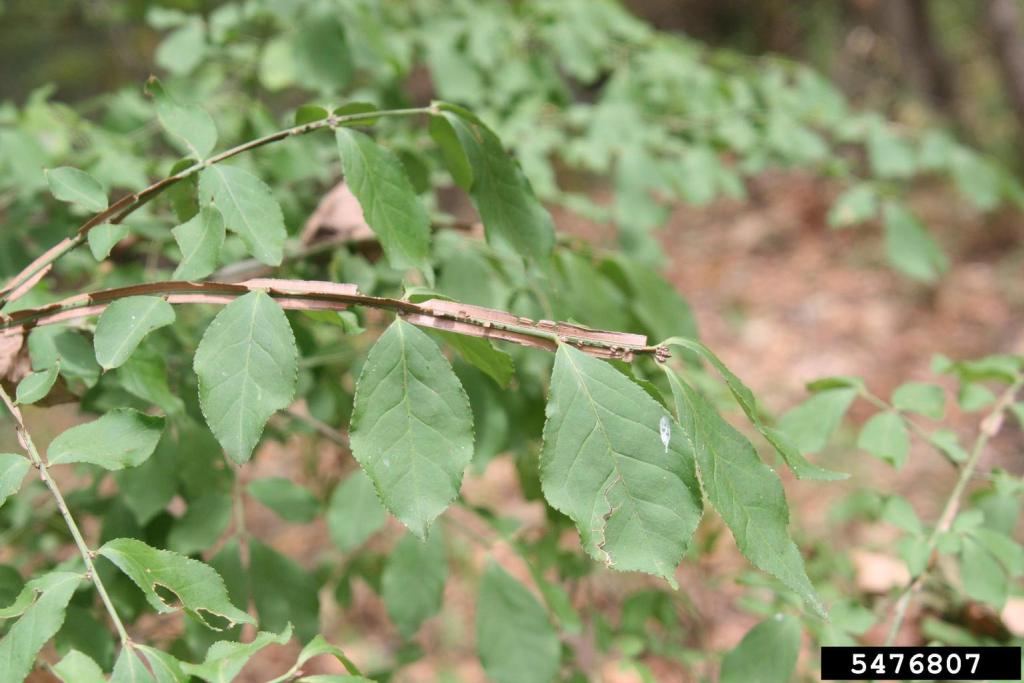
It’s not as pretty when it escapes to the wild.
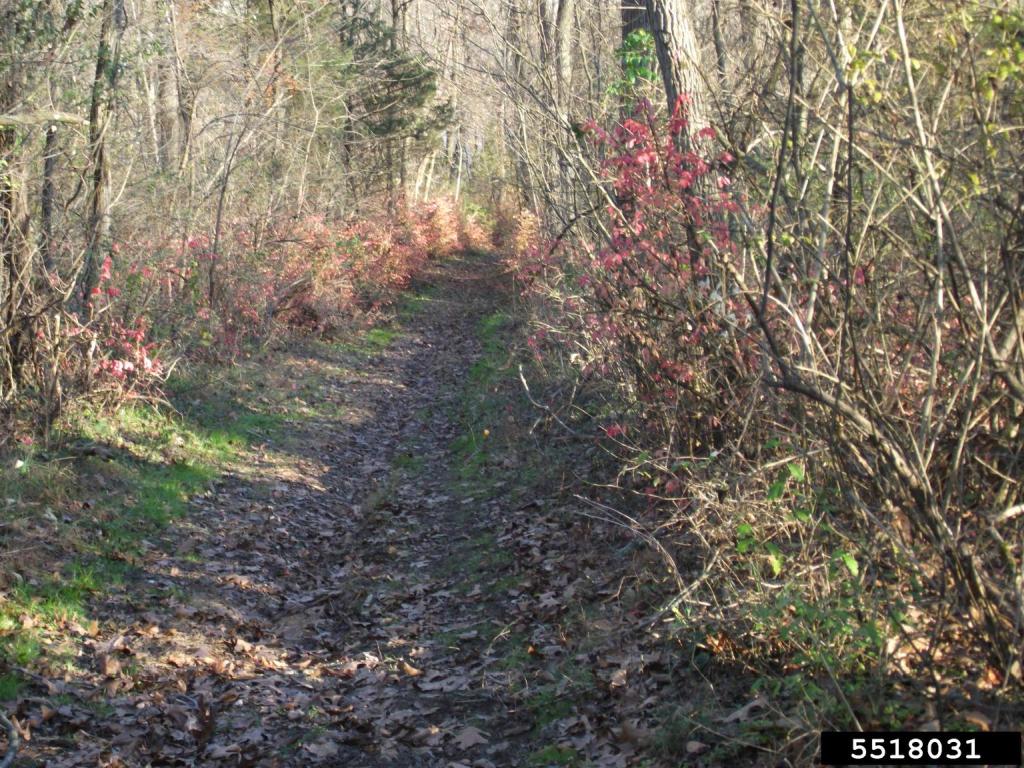
By January 2025 it will be illegal to sell winged burning bush in PA nurseries and garden centers. Meanwhile you’re encouraged to replace it with native species, listed here.
Privet hedge (Ligustrum spp.)
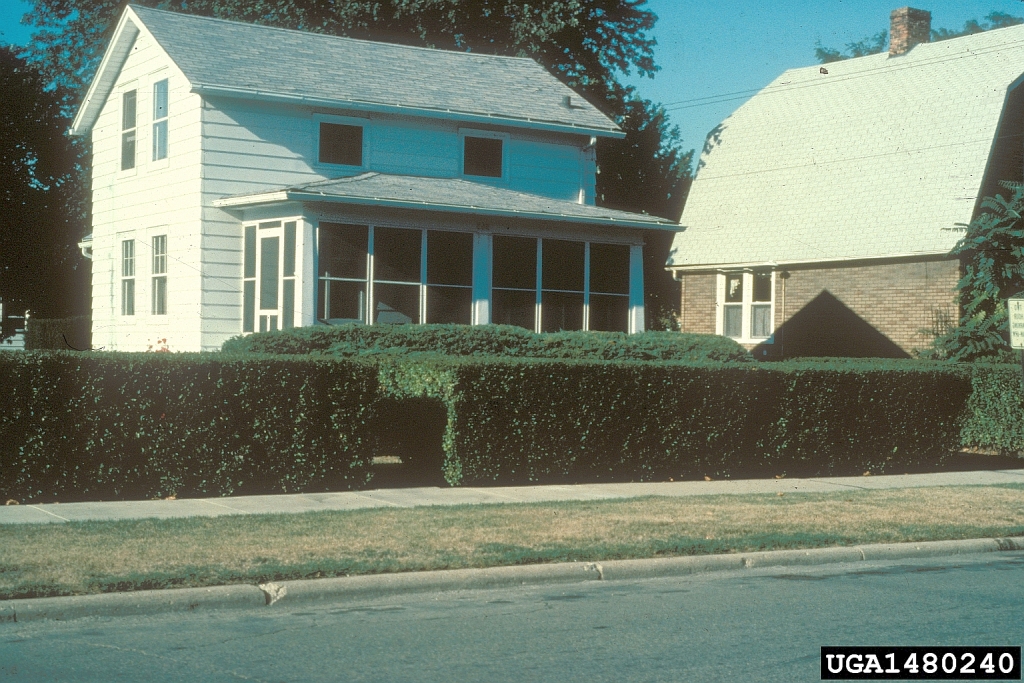
Almost everyone knows what a privet hedge is. Privet is the hedge that makes you buy hedge clippers and use them frequently.
Last month the Pennsylvania Department of Agriculture declared four species of privet noxious in PA: border privet (Ligustrum obtusifolium), common privet (L. vulgare), Japanese privet (L. japonicum), and Chinese privet (L. sinense). But no Ligustrum is native to the U.S. so if you see privet it’s an alien.
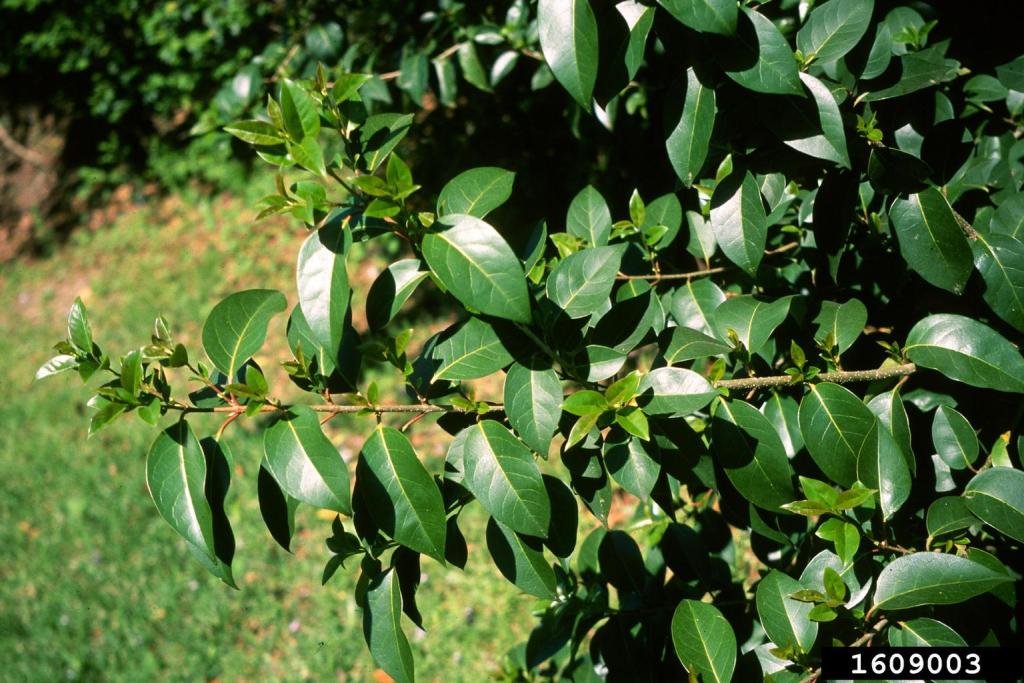
Privet’s ability to bounce back from cutting and regenerate from its roots make it great for borders but tenacious in the wild. I remember how hard it was to get rid of it from the border of my yard. It kept coming back until I dug up the roots.
Privet in the wild is not orderly, not tame at all.
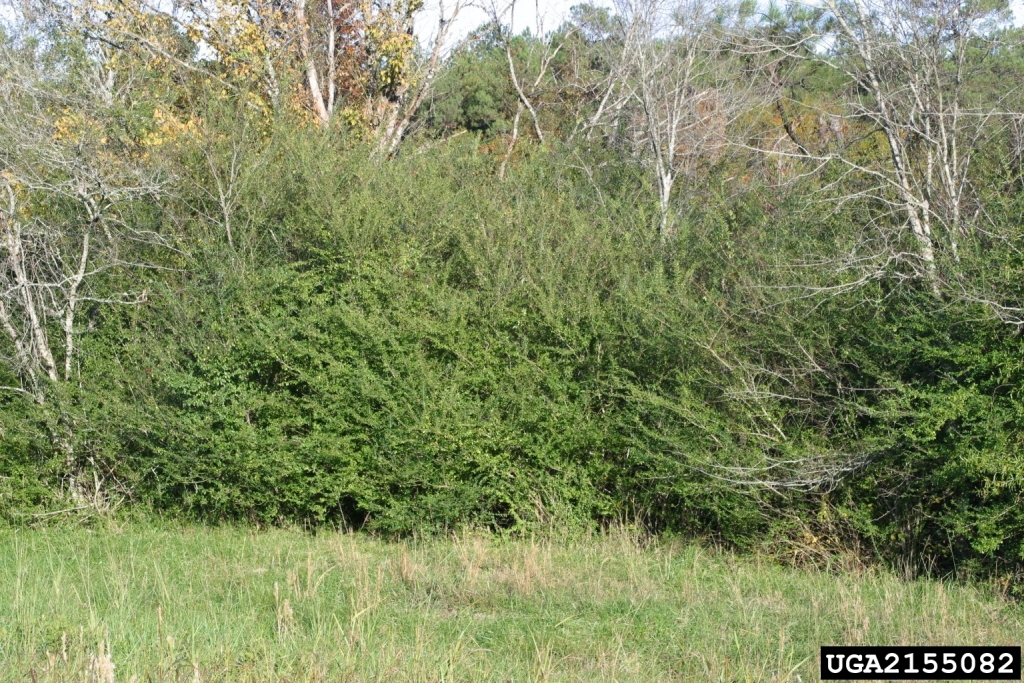
Just as for winged burning bush, privet will be banned from sale at PA nurseries and garden centers in January 2025. Meanwhile, save yourself time with the hedge trimmers. Dig up those privet roots and plant a native shrub. Substitutes listed here.
(photos from Bugwood.org credited in the captions; click on the captions to see the originals)
Thank you for another very timely post, Kate, and also for the useful link to PSU’s suggestions for replacements.
I noticed this past Fall that Burning Bush is all through Cedar Creek Park. Especially that area where the lovely little Snow Trillium are growing. The Gorge is such an amazing spot, with such a great variety of native wildflowers, but also so many invasives taking over. Now with the new housing going in outside the park, it will only exacerbate the problem. I’ve noticed a lot more bikers riding the Gorge Trail, too. There was even a kid riding a quad along the creek last week.